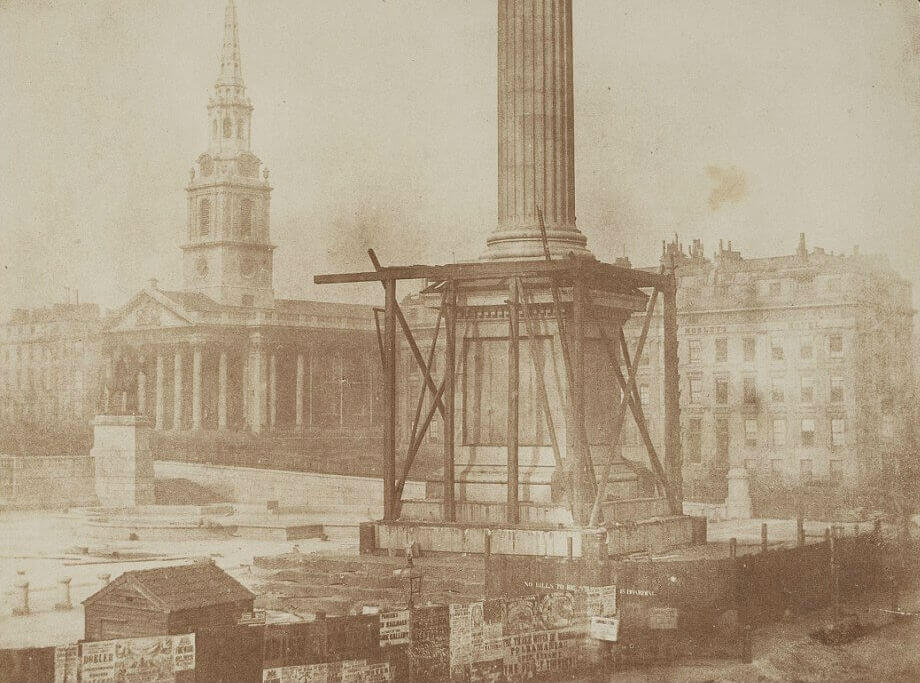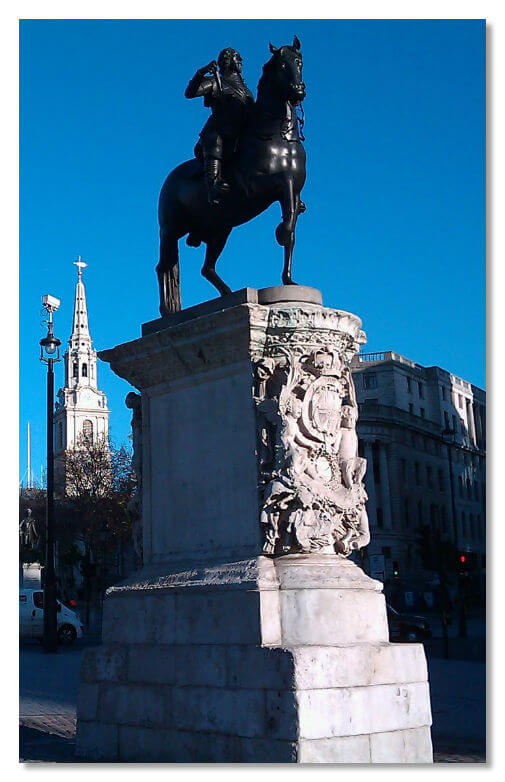Trafalgar Square is one of the most important assets of English history, located in the very center of London. Possessing a crazy rhythm of everyday life and constantly changing, London, at the same time, is thoroughly saturated with the breath of the past and reminders of past defeats and triumphs.
Historical information about Trafalgar Square
The name of Trafalgar Square refers us to the beginning of the 19th century and the war against Napoleon. In 1805, the British Royal Navy defeated a combined Franco-Spanish flotilla at the Battle of Cape Trafalgar on the southern coast of Spain, near the Strait of Gibraltar. The name itself has an Arabic etymology and originally sounded like "tarf al garb" (translated from Arabic - "western cape").

The history of Trafalgar Square dates back to the 13th century. Then, during the reign of Edward I, this place housed premises where first the royal falcons were bred, and a few centuries later, horses. Active construction began in the 20s of the 19th century according to a plan developed by architect John Nash. During the construction process, Nash died, and the work he started was continued by William Wilkins, who soon also died. The well-known architect Charles Berry was destined to finish the grandiose work on arranging the territory. In 1844, Trafalgar Square was solemnly opened.
Modern view of Trafalgar Square and its sights
It's almost impossible to be in London without being in Trafalgar Square. It is located in the heart of the capital of Foggy Albion - the historic district of Westminster, at the intersection of three key streets: Strand, Mall and Whitehall. Here is the underground station "Charring Cross" - the most important interchange of the London Underground. Therefore, the presence of a large number of people at any time of the day is not surprising.
The square is an integral architectural composition, and each of its elements is of great historical and cultural significance. It's time to take a closer look at the local sights.

Nelson's Column
As soon as a person finds himself in Trafalgar Square, the first thing that rushes his attention is a grandiose column. Made of gray granite, it rises above the old city, reaching a height of 52 meters. According to its design features, the column belongs to the Corinthian architectural style. It was designed by William Railton and built by 1843. At the top of the column is a monument to Admiral Horatio Nelson, the national hero of the British Empire, who died at the Battle of Trafalgar, but led his army to an outstanding victory. The height of the statue itself is 6 meters, it is made of sand stone. The pedestal is decorated with bronze curly leaves. On all four sides of the square base of the column are bronze panels cast from the cannons of Napoleon's defeated army. Each panel depicts 4 great victories of Admiral Nelson that immortalized his name: the Battle of Cape St. Vincent, the Battle of Aboukir, the Battle of Copenhagen and, of course, the last accomplishment in the life of an outstanding admiral - the Battle of Trafalgar. The author of the statue is Edward Hodges Bailey. Around the column are 4 bronze lions - they were installed later, in 1867.
Interestingly, Adolf Hitler was not indifferent to Nelson's column. The Fuhrer dreamed of taking out a huge structure after the conquest of Great Britain and installing it in Berlin. Fortunately, his cunning plans did not come true.
The column underwent a major restoration in 2006

Monument to Charles I
Standing on the south side of Trafalgar Square, the monument to King Charles I is considered the starting point of any distance in London, since it is located in the geographical center of the capital. The sculpture was created during the life of Charles I in 1633, and after the execution of the king, the fate of the monument could have ended sadly - Parliament ordered it to be dismantled and melted down. But the workers who were entrusted with this sabotaged the order, hid the statue, and when the monarchical order in Britain was restored, they gave it to the king's heir, Charles II.
After the restoration of the monarchy, there was a pillar near the monument, to which dangerous criminals and villains were tied and tortured in full view, and some were executed nearby. In this way, the king sought to kill in the bud in people the desire to go against the regime.
Londoners annually honor the memory of Charles I and on the day of his execution - January 30 - they bring flowers and wreaths.
